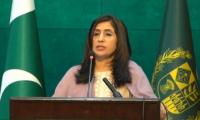Reforms season is in vogue again. The government set up a taskforce on civil-service reforms some months back. Dr Ishrat Hussain, adviser to the PM on institutional reforms and austerity, heads this body. While the report of the taskforce will be launched soon, it is worthwhile to consider civil-service reforms in perspective.
In order to understand the history, analysis, issues, and recommendations regarding the civil service, this article reviews some key studies (Cheema and Sayeed, 2006; International Crisis Group, 2010; and Shafqat, 2013) in detail. Some other relevant research (Wilder, 2009; Tanwir and Fennell, 2010; Hussain, 2015) is also examined. The bureaucracy is considered to be the “steel frame” of the state that has become rusty. There is a need for a pro-poor change in the bureaucracy since it delivers services to the people while politicians are responsible for transforming the demands of the electorate into policies, which are implemented by the bureaucracy.
Effectiveness depends on democratic dispensations to have broad-based coalitions rather than fragmented or “sectional clientelist interests” by keeping in mind the long-time horizons. The bureaucracy needs to develop internal cohesiveness and a degree of insulation or Weberian impersonalisation.
In Pakistan’s formative years (1947-1973), it was the bureaucracy that ran the state, with the military as a junior partner. The political forces were much too weak and were often dismissed from office. The bureaucracy, which inherited its institutional culture from the colonial legacy, was insulated from political pressures. In the 1962 constitution, there was a constitutional guarantee that guarded the independence of the bureaucracy. As a result, it undertook the task of state-building. But this was achieved at the cost of nation-building and led to fissures later on.
The Bhutto regime in 1973 brought fundamental changes in the status of the bureaucracy by doing away with the constitutional guarantee that earlier ensured its insularity, winding up the elite CSP class, turning the civil-service cadres into occupational groups on the national pay grades, and introducing lateral entry. The well-knit cohesiveness of the bureaucracy was broken, which made it more prone to fragmentation and political control. This institutionalised the political executive’s manipulation of the civil service.
The Zia period largely retained the post-Bhutto bureaucratic structure and further augmented the entrenchment and proliferation of fragmented political clientelist networks by eroding bureaucratic neutrality. Benazir Bhutto and Nawaz Sharif in the 1990s had their own teams of loyal civil servants where political affiliation was considered more important than professionalism and bureaucrats would get coveted posts by cultivating ‘connections’.
By placing the bureaucracy under the non-party political leadership at the local level, the Musharraf-era devolution plan further compromised on the neutrality of the bureaucracy and its administrative efficiency and promoted patronage politics. In the post-Musharraf era, the provincial governments were more inclined to restoring some of the earlier powers of the bureaucracy.
The problem is that the bureaucracy works in Pakistan in a non-transparent, overly extensive, rules-laden way and has discretionary powers. Its performance is not assessed through accountable outcome-based results. It doesn’t often use modern technology or management systems. The bureaucracy is also overly centralised and there are turf wars between the federal and provincial cadres. There is acute concentration of power in the ministries of finance and law, the Planning Commission and the Establishment Division.
The SOPs of many ministries haven’t been changed in many years and the misuse of discretionary leads to corruption. The ACRs often take into account personal qualities and general criteria rather than measuring performance against goals. Expertise and qualifications are not matched with job descriptions. Postings and transfers are arbitrary.
Some of the recommendations are that the civil service should be organised in four tiers: All-Pakistan, federal, provincial, and district services. There should be an objective performance appraisal system. Nadeem Ul Haque has argued for the reorganisation of the bureaucracy along competitive lines; its independence to be protected through the law; doing away with expensive perks and privileges of civil servants; and giving them market-compatible salaries.
The question is: why have various attempts to reform the civil service not worked in the past? Wilder (2009) has an interesting insight that suggests powerful interest groups, including the civil service and politicians, have resisted reform efforts. The resistance is essentially political and has nothing to do with the lack of technical expertise. To overcome this problem, there is a need to deal with “disincentives for reform” and strengthen the broader constituency that is in favour of reforms.
For any reforms to be successful, there is a need for the state to achieve “relative political autonomy” from dominant groups and classes. In his 10-year rule in Punjab, Shahbaz Sharif was able to achieve this to some degree and made bureaucrats deliver on targets and provide service-delivery, as the computerisation of land records and some other indicators have revealed. Sameen Ali’s research on the bureaucracy states that Shahbaz Sharif’s anti-corruption drive was selective. While calls for patronage (bad sifarish) by some politicians were discouraged, the same was not done (good sifarish) for the favoured politicians.
We don’t view the trend identified by Ali in entirely negative terms. It shows a journey for the ruling coalition to achieve at least partial autonomy of the state and insulate it from patronage politics to some degree. To be able to win again means that politicians need to provide services to a large cross-section of society. It seems Shahbaz Sharif succeeded in doing this in Punjab to some degree. It still allowed some form of patronage politics that could be done away with through the uninterrupted continuation of democracy and political stability.
In other words, for any civil-service reforms to be successful, the fundamental question of the stability of political regimes with long-time horizons and the change in regime on the basis of outcome-based performance needs to be institutionalised.
The writer is an Islamabad-based social scientist.
People stand in line up as election officials check their ballot papers during voting general election at a polling...
Women show their voter identity cards as they stand in a queue before casting their votes in Agartala. — PTIThe 18th...
Former prime minister Imran Khan. — Instagram/ imrankhan.ptiAn old saying has it that “when you dance with the...
Kashmiris in Indian illegally occupied Kashmir protesting against the Indian occupation as the forces of India looked...
A representational image showing residents walking at a wholesale market in Karachi. — AFP/FileOnce again there is...
A representational image showing late Pakistani human rights activist and Supreme Court lawyer Asma Jahangir. —...







